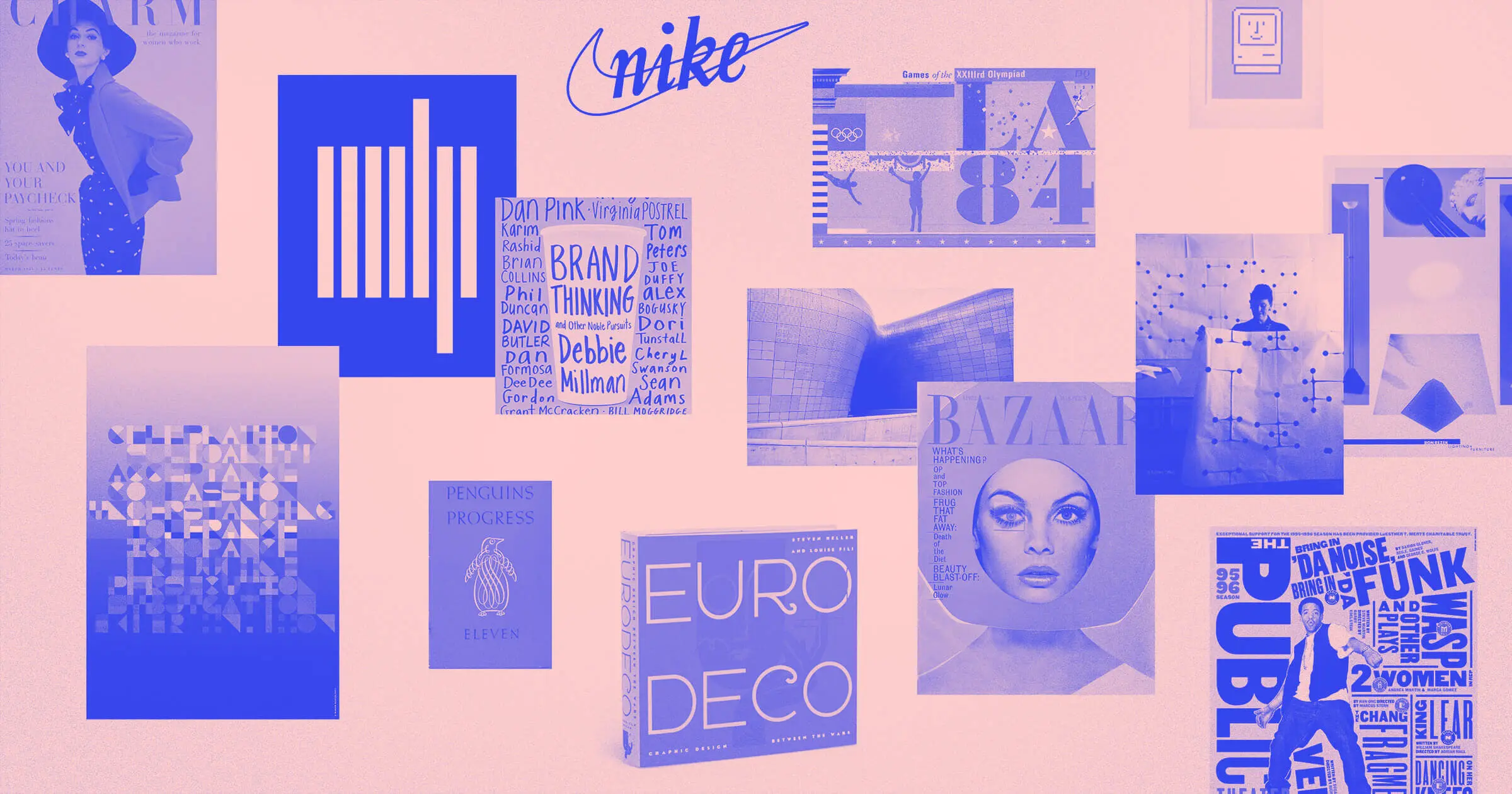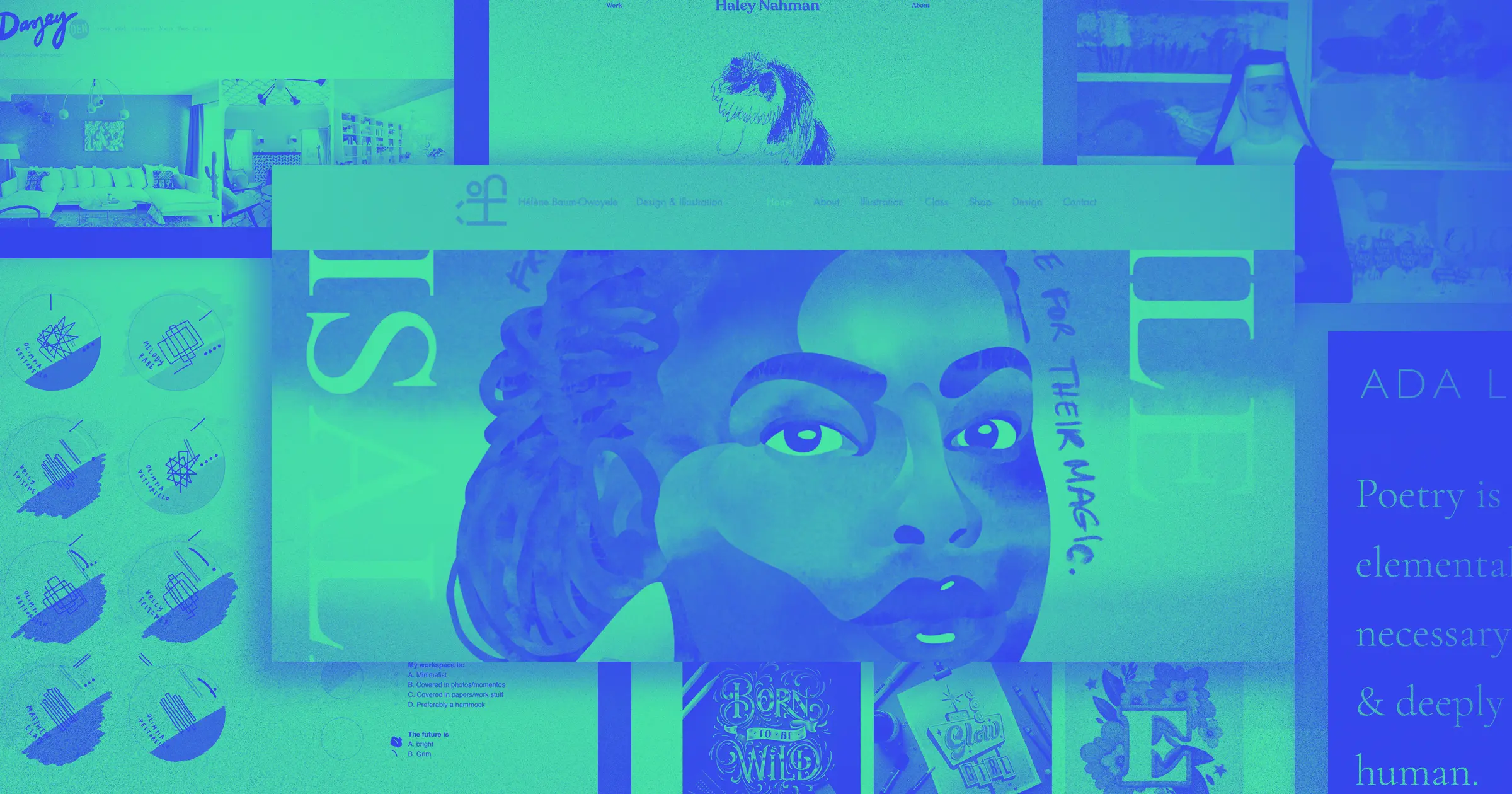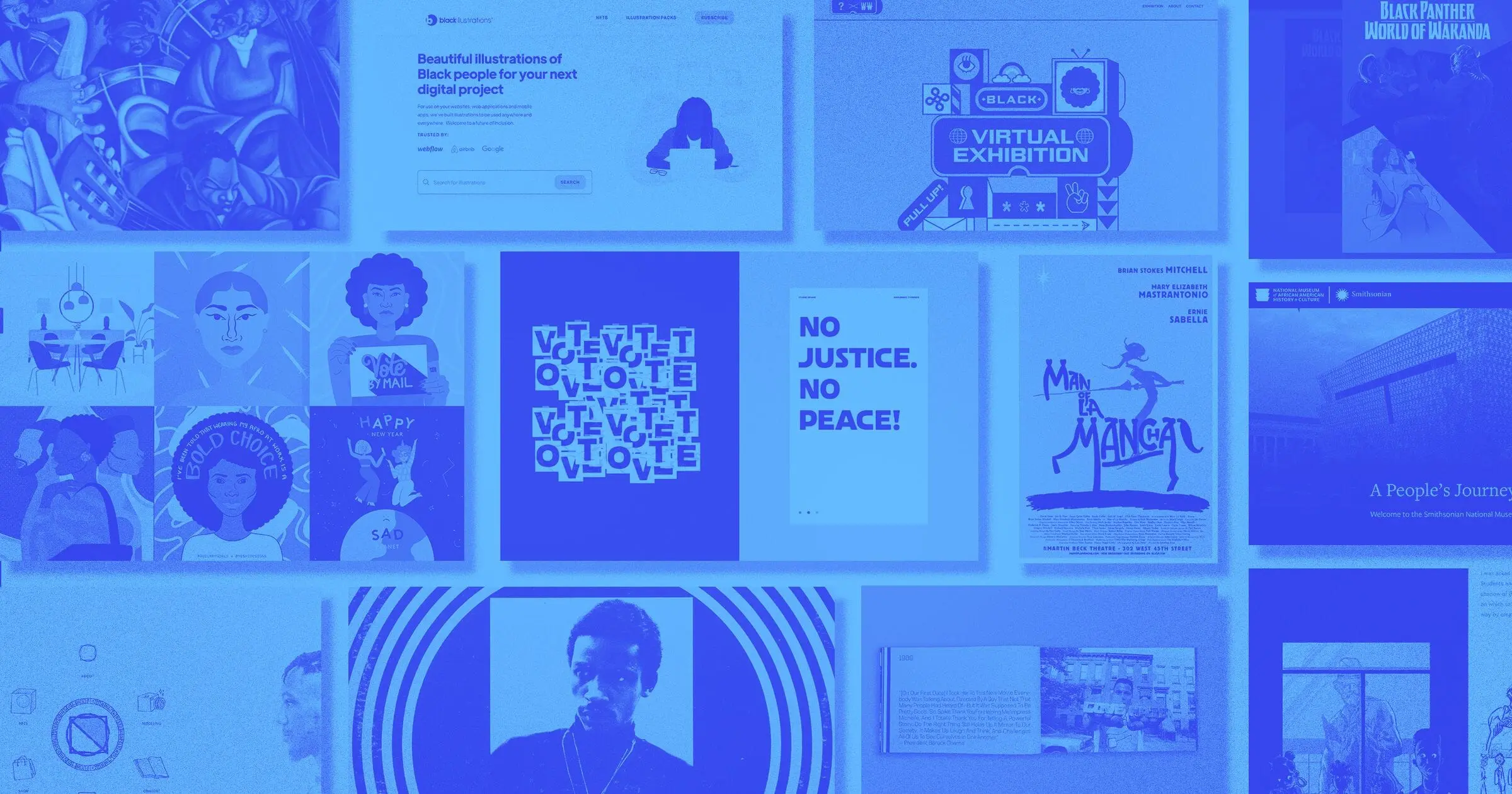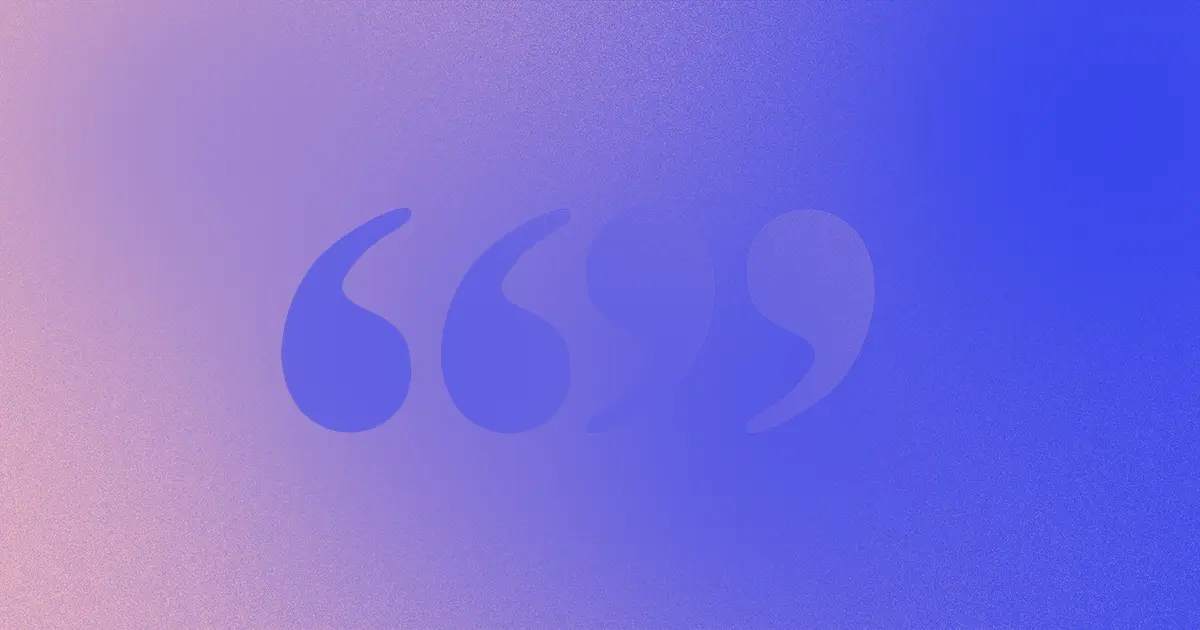In a world that largely fails to properly recognize the millions of women who lead the way in many fields, here at Webflow, we want to do better for the design community.
Here are fifteen women who have made lasting contributions in their creative fields, whose careers and work should serve as an inspiration to everyone.
1. Paula Scher
“The goal of design is to raise the expectation of what design can be.” - Paula Scher
Paula Scher’s work unleashes the hidden potential of typography. Through positioning, scaling, and space, she takes the tame lines of letters and makes them eclectic. This imaginative rendering of typography, combined with her bold yet tasteful use of color, makes her work instantly recognizable.
Paula’s first major role was working in the music industry as a designer for CBS Records and she would later move on to Atlantic Records. During her tenure in the music business, she would create album covers for such artists as Charles Mingus, Boston, the Yardbirds, and other notable musicians.
Her experience designing album covers would inform the widely recognized work she did for New York’s Public Theater. Where theater is often associated with a stuffy seriousness, she pioneered a branding identity for them that reflected the creative spirit of their productions. The posters she produced for them buzz with the energy of rock and roll and hip-hop.

A good designer can capture — in a microcosm of space — the essence of what makes something unique. Whether it’s on the space of an album cover, a poster, or the cover of a book, Paula’s designs balance experimentation with practicality to communicate messages in a way that captivates. Paula is still a working designer — check out more of her work over at Pentagram.
2. Ray Eames
“What works good is better than what looks good, because what works good lasts.” - Ray Eames
Ray Eames’ roots were in abstract painting, and she was an active member of the art scene in New York during the 1930s. A common criticism of abstract art is that it’s an amorphous mess, lacking any sort of cohesion. But looking at Ray’s paintings shows that, early on, she understood how shape, form, and color worked together.
Her talents in creating visual harmony would serve her well with the work she did with her husband, Charles, in creating furniture and other industrial designs. Ray was a true polymath, whose work as a designer, painter, and filmmaker all display attention to detail as well a high level of artistry.
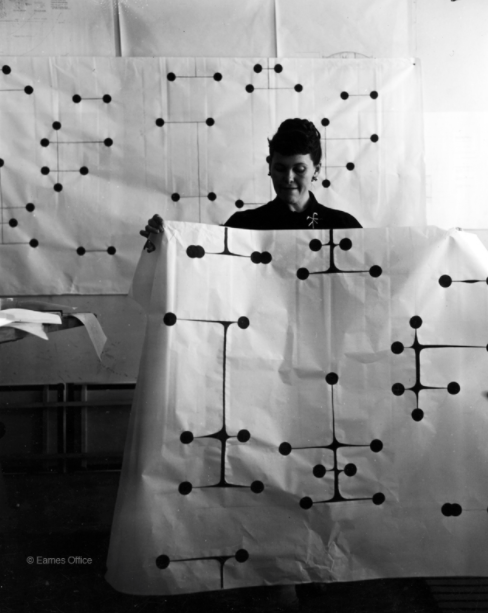
There’s something timeless about all the work Ray was involved in. From the functional beauty of the chairs she produced to the abstract symbol patterns she crafted for textiles, even those with an untrained eye can recognize the talent behind her designs. She embraced a sense of modernism that has never gone out of style.
3. Louise Fili
One of the things Louise Fili does best is synthesize classic typography in new and unique ways. We can see traces of where she draws her inspiration, but her sense of inventiveness and imagination takes typefaces to places that are uniquely hers.
This flair for typography can be traced back to her time at Pantheon books. She was an art director there for 11 years and designed almost 2,000 book covers. That time spent on looking and arranging text gave her a chance to develop her own typographic sensibilities, as well as give her a keen eye for clean design.

Louise is still designing today. She heads her own agency in NYC and is still creating book designs that have a classic elegance and a slick sense of modernism.
4. Elizabeth Friedländer
Elizabeth Friedländer was born in Berlin, Germany in 1902. As someone of Jewish descent, hostility in Germany and the anti-Semitic Nuremberg laws of 1935 forced her to flee from her home country. Though she only got to spend a short amount of her young adult life in Germany, she managed to become the first woman to create two typefaces — Elizabeth-Antigua and Elizabeth-Kursiv — for Bauer Types in 1927.
After Elizabeth left Germany, she spent much of her time as a designer in England. She worked across various mediums including book covers, packaging, prints, and typography. She had a talent for patterns and texture, which can be seen in much of her work.
From book design for Penguin to counterfeit Nazi documents and materials for the British black propaganda unit of the Political Intelligence Office — she did it all.
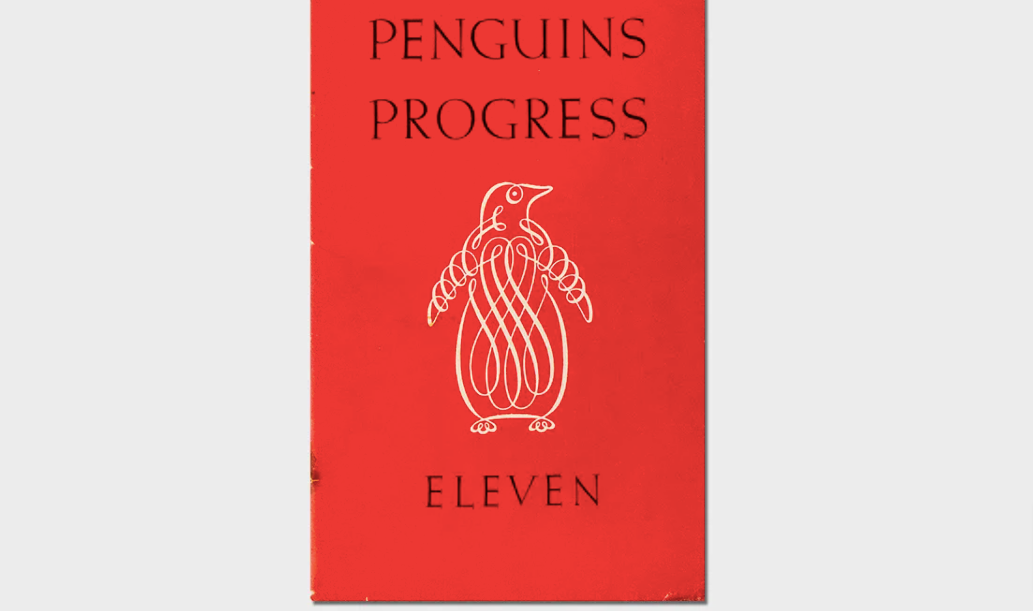
Elizabeth’s work is an example of how the creative spirit can shine through, even during some of the darkest days in history.
5. Zaha Hadid
Born in Iraq in 1950, Zaha Hadid was one of the most prominent Iraqi-British architects in history.
She studied mathematics and later went on to the Association School of Architecture in 1972. Though she was adept at the analytical skills that came from her education, she found something lacking in standard architectural illustrations. She developed an approach to loosen up these rigid lines and tapped into the expressiveness of painting to inform her work. We can see this duality — where formality meets artistry — in the curves and lines of her architectural works that can be seen worldwide.

Her professional accomplishments are many. She was the first ever woman to land the Pritzker Architecture Prize, which she received in 2004. Her buildings are undulating waves of glass and concrete, melding into the landscape, instead of the unmoving straight lines of more conventional architecture. Some of her most famous creations include the Broad Art Museum, the Guangzhou Opera House, and Galaxy SOHO.
6. Susan Kare
“Good design’s not about what medium you’re working in, it’s about thinking hard about what you want to do and what you have to work with before you start.” - Susan Kare
Susan Kare’s contributions to design shaped how we interact with computers today. Her work in creating icons for the early Macintosh brought what was once a sterile and cold piece of technology to life.

Susan put much of her time into developing her skills in the fine arts — she pursued sculpture in undergrad and in graduate school. Though her focus was in the malleable medium of clay, she learned graphic design as an intern in high school and would continue to land design gigs in her adult life. Her skills in these two different artistic pursuits — one tactile and the other visual — would be her guide in her work for Apple.
Susan created digital-based icons that reflected the real world. Macintosh’s scissor symbol was instantly recognizable as something used to cut. Instead of boring symbols, she wanted users to feel a personal connection with the machines they were interacting with.
If you’re on a Mac right now, look at the symbol on the command key. This icon was created by Susan. Derived from a Swedish symbol representing “special attraction,” any designer will see the brilliance in this small clover-shaped knot.
Susan has had a long and varied career as a designer, having also worked with Pinterest, Facebook, Intel, and IBM.
7. Bea Feitler
Bea Fetier was a Brazilian graphic designer who worked at the zenith of magazine publishing. At 25, she became an art director at Harper’s Bazaar. She held this role for 10 years, pushing its identity in a more modern direction. After her stint at Harper’s Bazaar, she was the art director at Ms. Magazine, whose feminist-empowering philosophy aligned her own beliefs.

Her work from the late 60s and early 70s captures an aura of excitement and experimentation that seized the art world. Before her death in 1982, her design skills touched Rolling Stone and Vanity Fair, as well as album covers, advertisements, and posters.
Bea was one of the first women in design to give a voice to feminism through her work, showing that graphic design can be more than just an arrangement of text and visuals, but that it can help challenge societal norms and push forward change.
8. Deborah Sussman
Environmental graphic design places a focus on how people interact and process physical spaces. It relies on understanding how disciplines like graphic design, interior and exterior design, and architecture intersect to create spaces that are more than pedestrian experiences.

Deborah Sussman has had a prolific career as an environmental graphic designer for the last thirty years. She’s most famous for the work she did for the 1984 Olympics held in Los Angeles. She developed graphics and signage with a distinct visual language that helped visitors attending.
Whether you’re creating an Olympic Village or a website, both need to have a user experience that’s both engaging and easy to navigate. Looking back on her work has many valuable lessons for designers today.



















Build websites that get results.
Build visually, publish instantly, and scale safely and quickly — without writing a line of code. All with Webflow's website experience platform.
9. Cipe Pineles
Cipe Pinele brought fine art into the world of publishing. As the art director for publications such as Mademoiselle, Vogue and Glamour, she commissioned artists to create custom illustrations and other visuals, elevating these magazines from generic consumerism, into artworks of their own right. Her skills as an artist and graphic designer helped her find the appropriate artists who would give these publications a sense of distinction.

She is credited as being the first woman to land the role of art director for a major mass-market publication. Her influence can still be seen in high fashion today.
10. April Greiman
When computers became a viable way to create art and design in the early ’80s some were skeptical of this emerging technology. Others, like April Greiman, saw new dimensions in artistic creation that could be opened up, and jumped into this new medium. April was an early adopter of this brand new way to design.
As a part of the CalArts faculty and a member of the design department, which she joined in 1982, she took advantage of the technology available at the school. It allowed her to experiment with digital and video equipment. She used this technology to innovate new ways of creating designs.
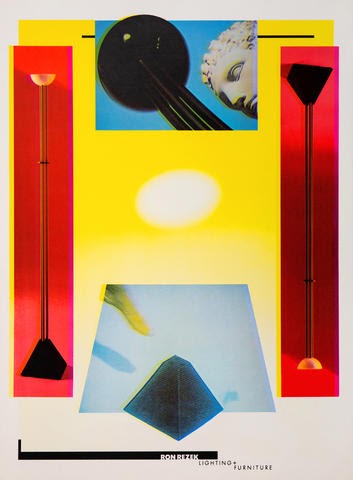
This poster titled “Iris Light” was one of April’s most notable pieces. She took a 35mm photograph of a video image that was displayed on a monitor. The end result was silk-screened, bringing together both old and new technologies for something fresh and exciting.
Forward-thinking designers have a way of seeing the potential in technological advancements. April is an inspiration to any creative for embracing change to help one evolve in their work.
11. Marian Bantjes
Marian Bantjes draws from a deep pool of inspiration in creating stylized lettering, heady patterns, and rendering designs that defy conventions. She spent a decade as a typesetter in book publishing, fostering uniformity and cohesion in her work. Though there’s a strong sense of structural undertone in her designs, there’s an organic feeling and warmth to her creations.
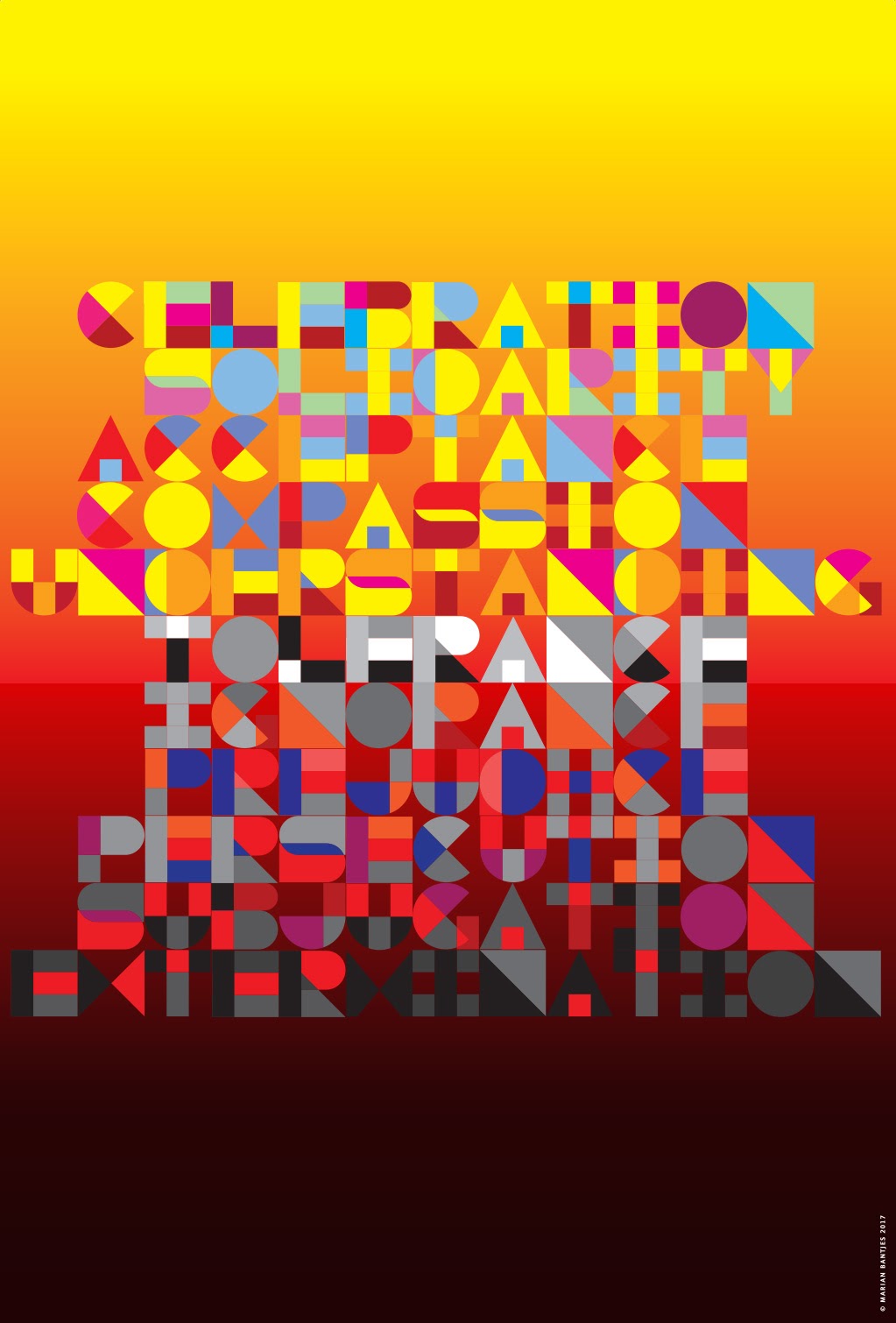
After spending time as an agency cofounder, she now works on her own as a designer and writer. She continues to create work marked with her modern, yet hard-to-classify artistic sensibilities.
12. Margo Chase
We always love hearing stories about those whose paths took a turn or two before landing on their current career. Who would have thought that the woman responsible for the Buffy the Vampire Slayer logo earned her BA in biology?
Margo planned on becoming a veterinarian, and in an effort to boost her GPA for grad school applications, she took an illustration class. It was here that she found her calling as a creative. After graduation, she was accepted into the medical illustration program at UCSF, ultimately discovering that it wasn’t the best fit. She would then move to LA where she started her design career as a freelancer.

Outside of the work she did for Buffy, Margo has also worked with high-profile clients like Pepsi and Procter Gamble. She also worked in the music industry, creating album cover artwork for Prince, Madonna, and Selena. Her personality and flair for typography can be seen across all of her designs.
13. Debbie Millman
“Visual storytelling utilizes both language and art to pass on the essence of who we are.” - Debbie Millman
Debbie Millman isn’t only skilled as a designer. She’s also an artist, writer, and speaker. She also launched the first-ever design-focused podcast, Design Matters, in 2005.
Along with her impressive career as a designer, Debbie is also an accomplished author. She has authored six books touching on various facets branding and design. She’s also an illustrator, whose work has appeared in a variety of publications including Fast Company and The New York Times.

With an impressive skill set, Debbie is a multidisciplinary wonder woman, showing that it’s possible to be successful in a variety of creative realms.
14. Carolyn Davidson
Carolyn Davidson found her way to a career in design after taking a design course as an elective at Portland State University (PSU) in 1972. Her major was journalism, but she enjoyed the class so much that she soon switched to graphic design, earning a bachelor’s degree.

While still a student at PSU, Carolyn had a chance encounter with Nike’s co-founder, Phil Knight, who was an accounting teacher at the time. That encounter led her to a career at Nike, where she would eventually design one of the most widely recognized brand logos in history: the Nike Swoosh.
She started her career at Nike doing grunt work, churning out visual materials for meetings. She eventually moved up, creating marketing collateral, and was tasked with coming up with a logo for a new line of shoes. She came up with a couple different ideas, and the swoosh was chosen. She was paid $35.00 for her work at the time. Phil Knight later gave Carolyn more compensation in the form of Nike stock — 32,000 shares, to be exact.
The Nike swoosh is a simple symbol, but it’s effective in communicating motion — a pure display of Carolyn’s genius as a designer.
15. Muriel Cooper
“Information is only useful when it can be understood.” - Muriel Cooper
Muriel Cooper began her career as a designer in the Massachusetts Institute of Technology (MIT) publication office. She had a simple job, creating and printing flyers for the office. In the 40 years that followed, she continued working for MIT, where she became the first design director at MIT Press.
Similar to April Greiman, Muriel was another designer who embraced digital technology in its early stages — but she also saw the challenges that technology posed. She was brilliant at figuring out how to navigate the complicated nature of digital technology, using it effectively in her design work.
Her Bauhaus-inspired design graced many covers of books that MIT published. She also created the iconic MIT Press logo, with its minimalist row of lines reminiscent of a row of books.

Muriel is a great example of someone who stayed curious her entire career, whose expertise grew, and who stayed ahead of design trends.
Giving women the recognition they deserve
Women have existed at the top of creative fields for decades. Though much has changed in favor of design becoming a more inclusive space, there will always be room for more awareness and appreciation.
In this limited amount of space, we only highlighted 15 designers, but there are so many others deserving of recognition. What women have influenced or inspired your own work? Let us know in the comments below.


